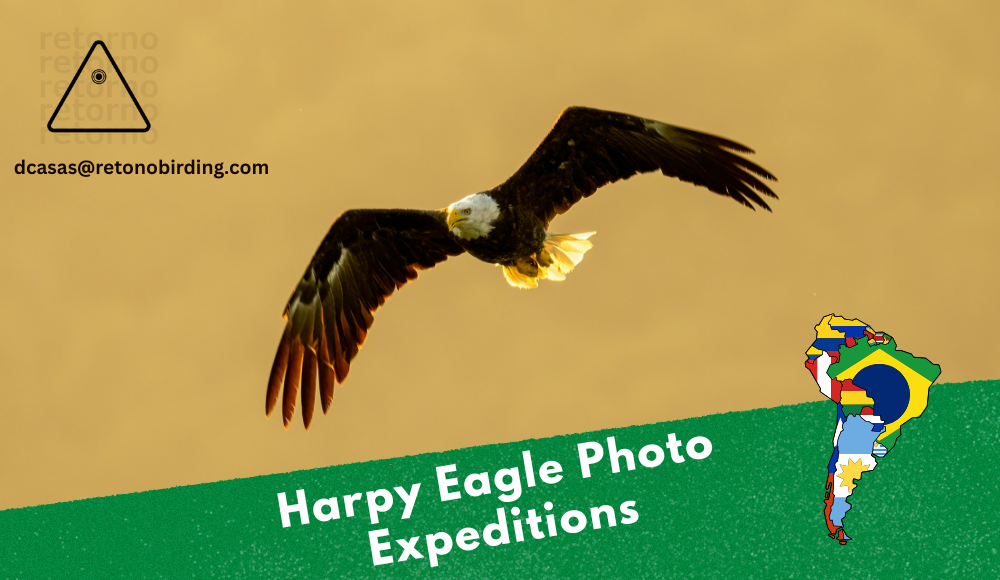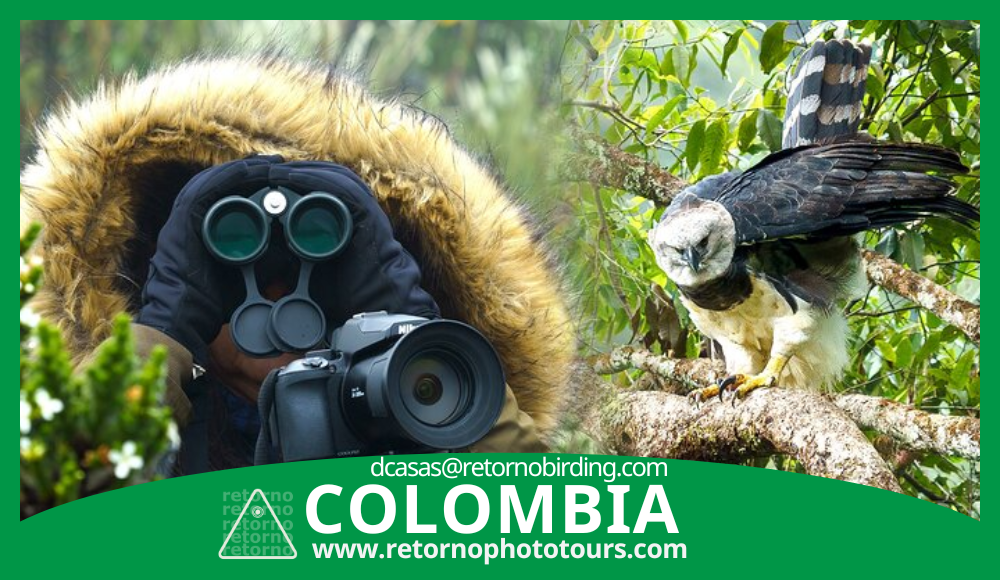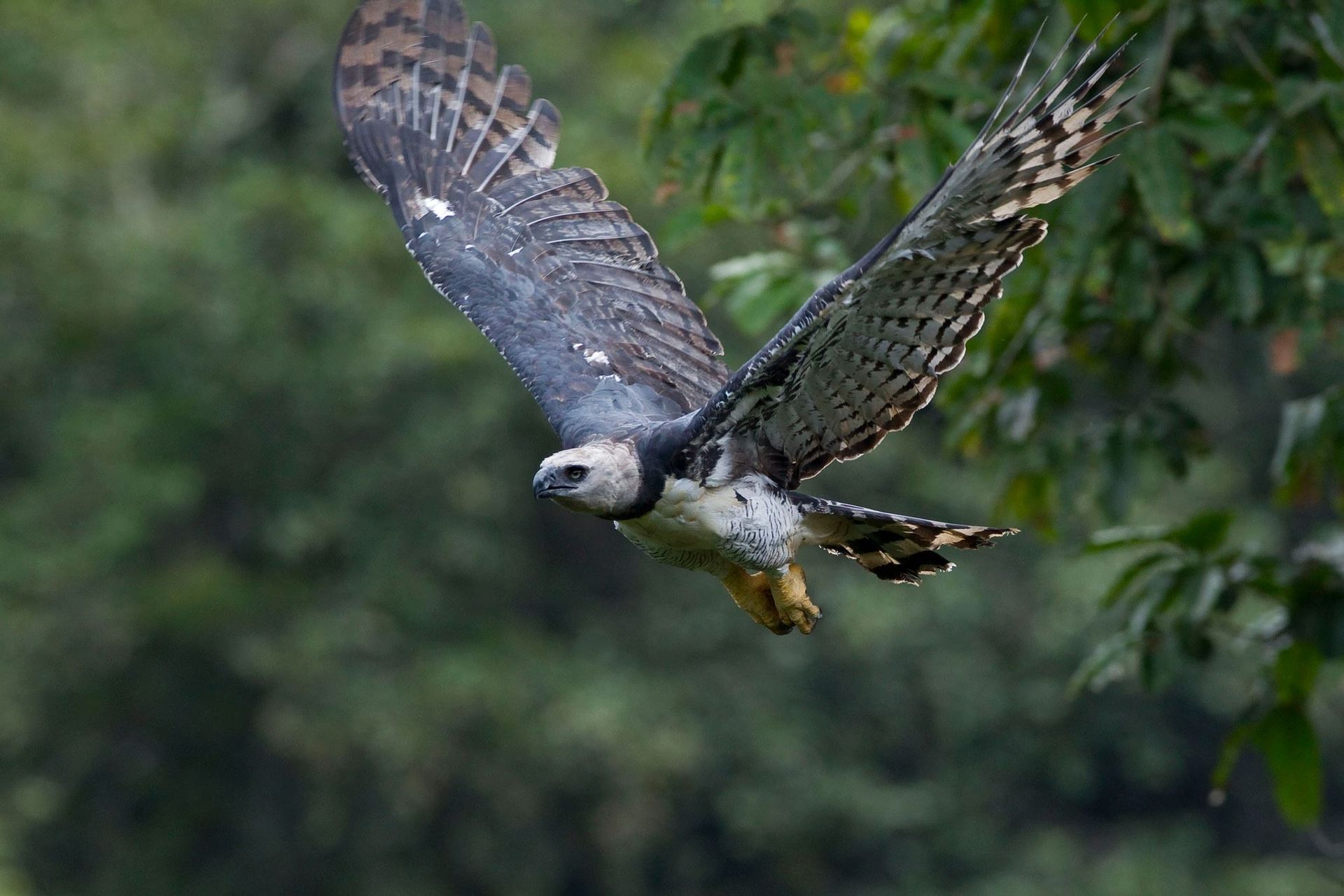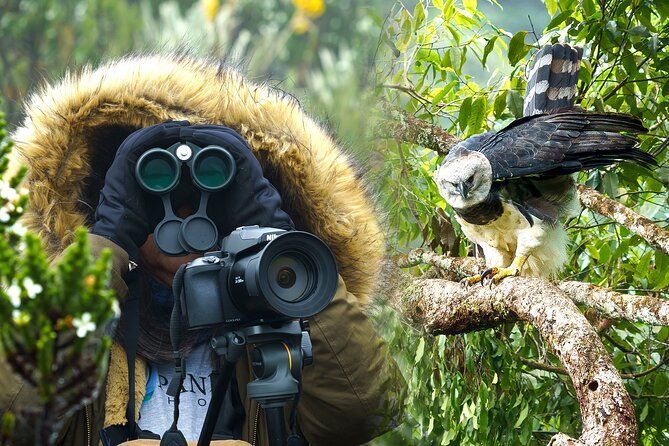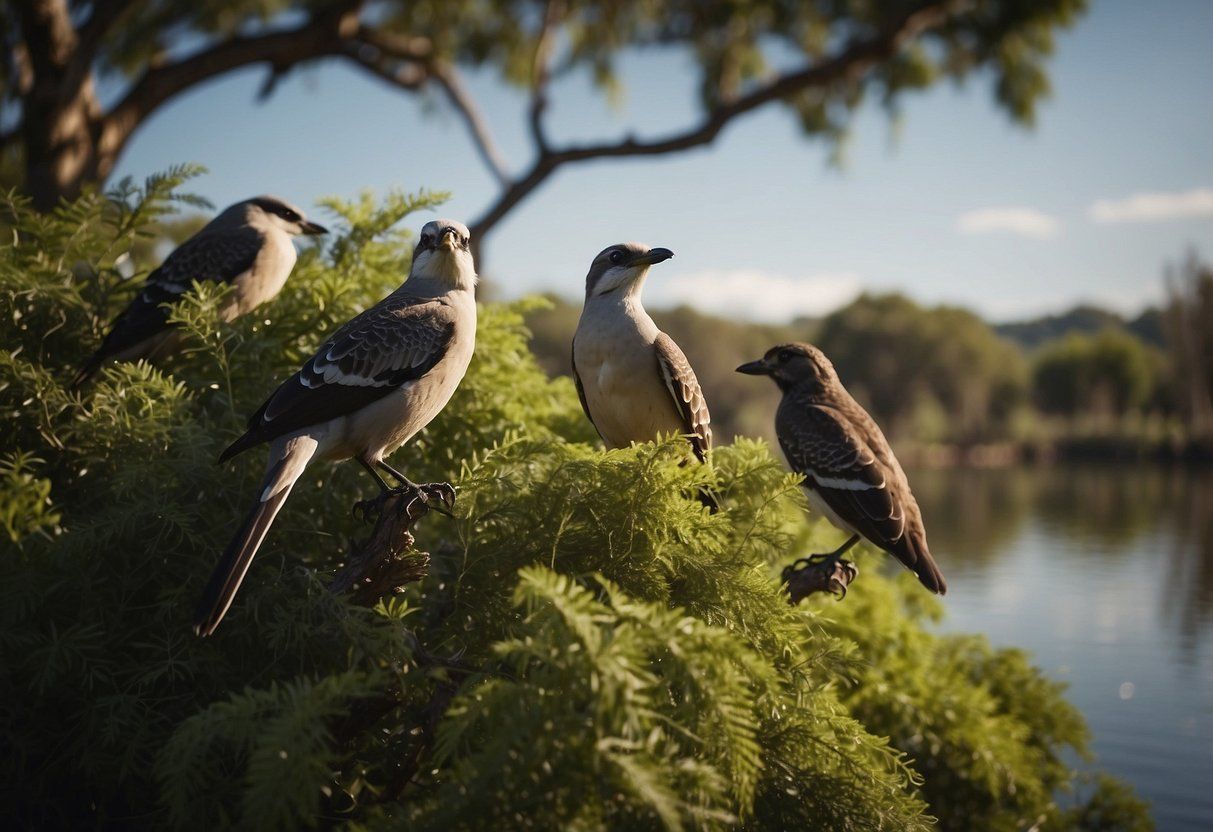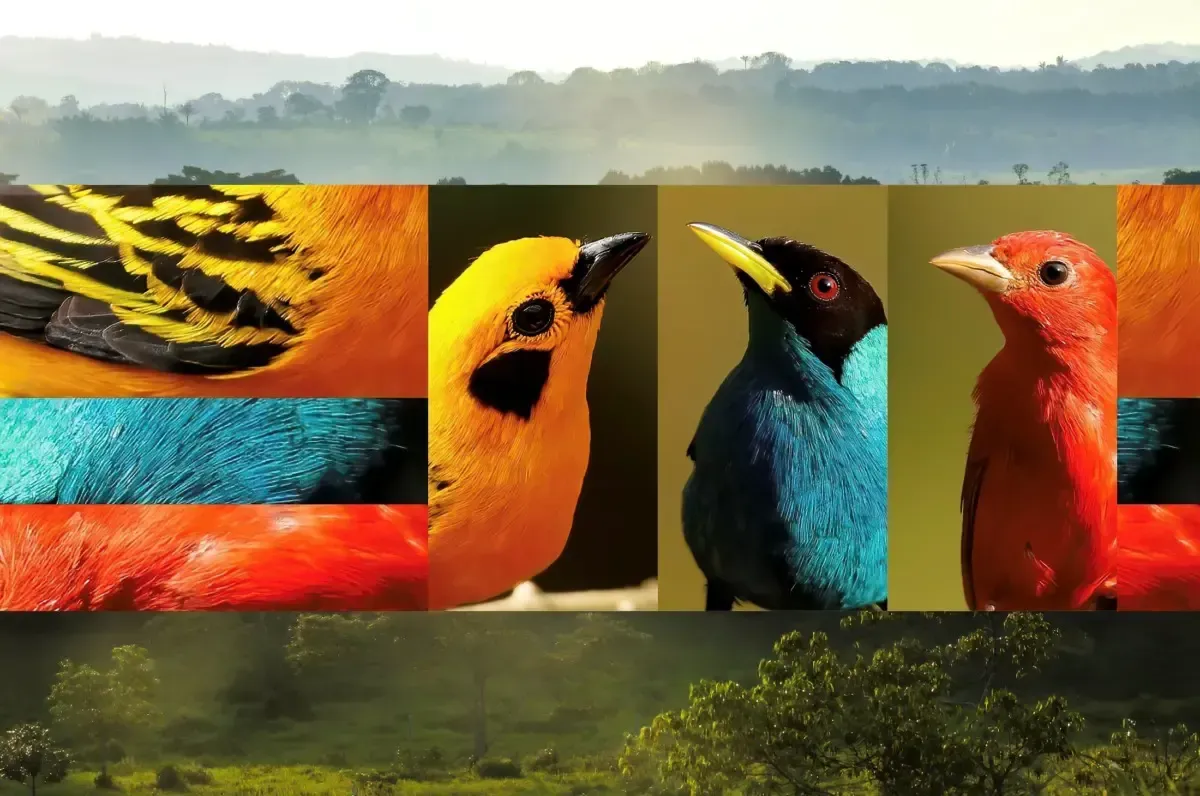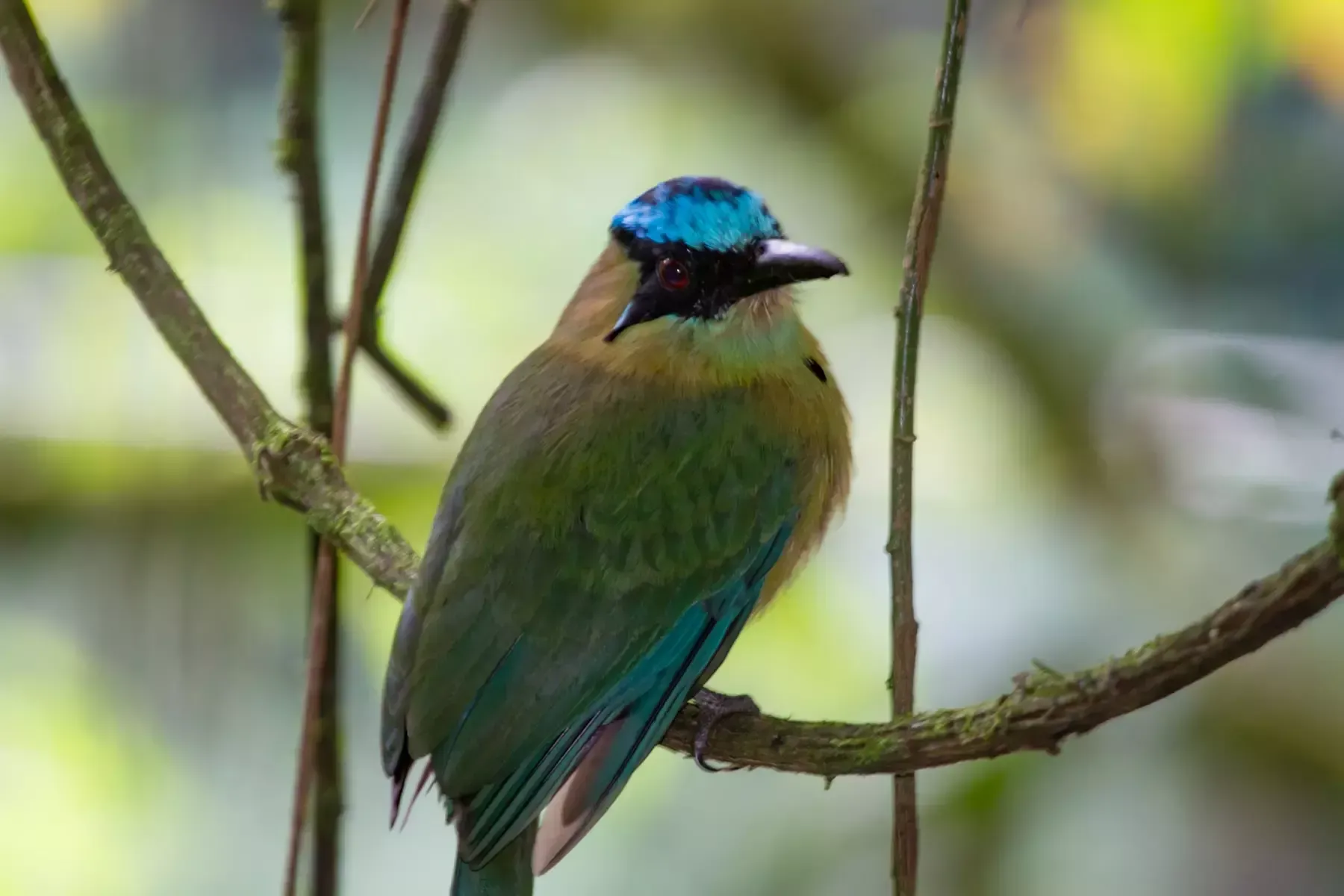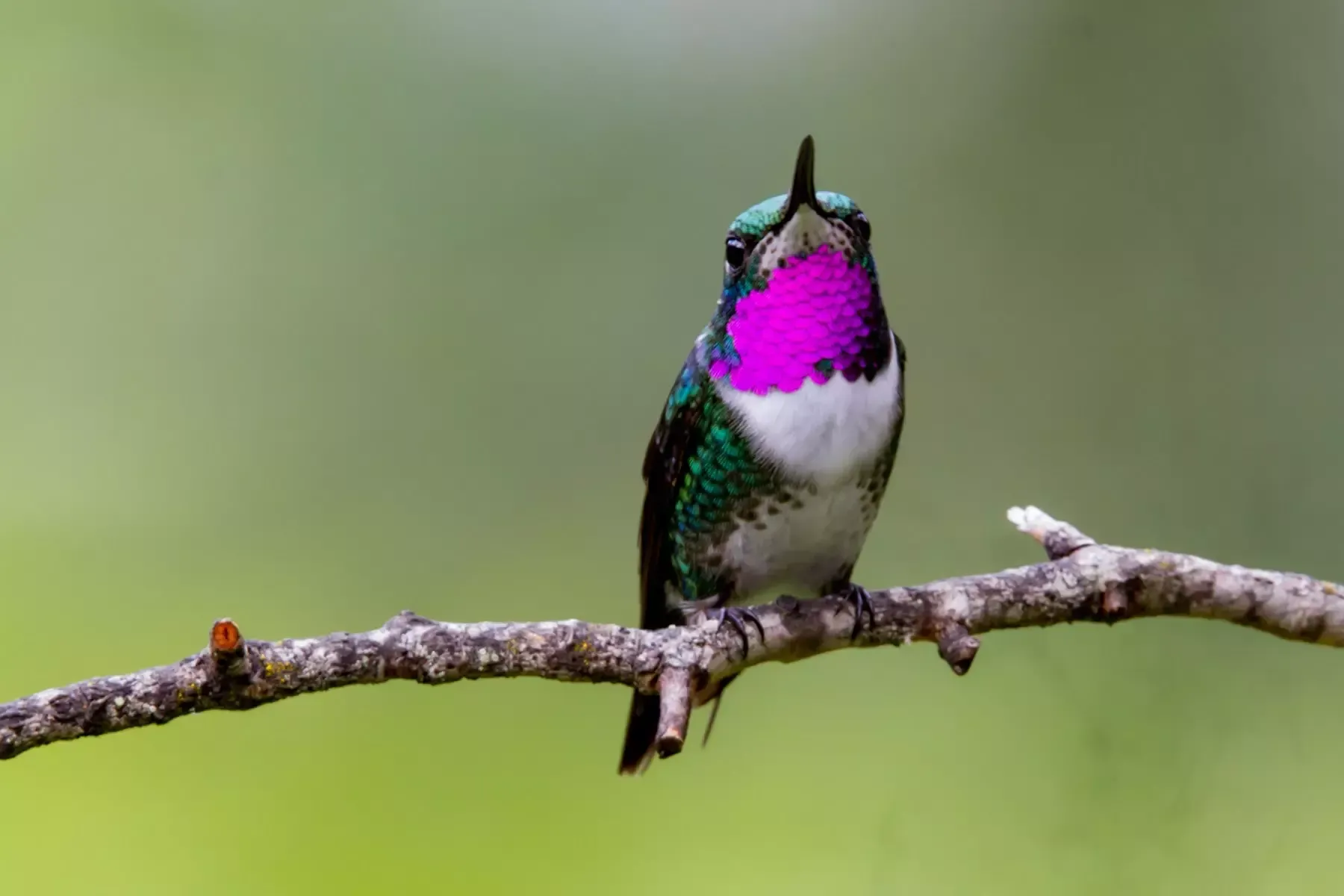Harpy Eagle Birdwatching in South America: How to Find, Observe, and Photograph the Species
Harpy Eagle Birdwatching in South America: How to Find, Observe, and Photograph the Species
The Harpy Eagle is one of the most powerful and awe-inspiring raptors on Earth—a creature whose immense talons, commanding posture, and silent mastery of the rainforest canopy have inspired stories, legends, and scientific fascination. For birdwatchers and wildlife photographers, seeing a Harpy Eagle in the wild is nothing short of a life-changing moment. Their rarity, secretive behavior, and enormous territories make every encounter precious.
In recent years, specialized conservation areas have made it possible to observe this species ethically, with minimal disturbance, and under expert guidance. Today, birders and photographers have an extraordinary opportunity: the Harpy Eagle Nesting Season has begun, and the Harpy Eagle Natural Reserve stands as one of the only places on Earth where visitors can safely witness a full breeding cycle.
This article provides a complete guide on how to find, observe, and photograph Harpy Eagles in their natural habitat—drawing on real behavior, seasonal movements, and expert field knowledge—while also offering tips on the best times, locations, and techniques to maximize your chances of a meaningful encounter.
Understanding the Harpy Eagle’s Nesting Cycle: Key to Successful Observation
The most impactful way to plan a Harpy Eagle birdwatching or photography expedition is to first understand the rhythm of its nesting cycle. This species invests enormous time and energy into reproduction. A single breeding attempt can last more than a year and a half, and a pair may only raise one chick every two to three years. Their behavior, visibility, and photographic potential shift dramatically from stage to stage.
At the Harpy Eagle Natural Reserve, the nesting period has already begun, unlocking a window of observation that is unmatched anywhere else in South America. The reserve follows this cycle closely, and because access is controlled and supervised by experts, the birds experience no stress or interference.
Below is the full timeline of the Harpy Eagle’s five-stage nesting process—each phase offering extraordinary moments for birders and photographers.
The Five Stages of the Harpy Eagle Nesting Season
1. Courtship, Mating, and Nest Building (August – October 2025)
The breeding cycle begins with one of the most intimate and beautiful stages of the Harpy Eagle’s life. Courtship behavior involves a blend of subtlety and power. The male arrives with prey items—symbolic gifts meant to demonstrate not only affection but capability. The female, perched regally on a high emergent tree, accepts these offerings with signs of complicity and trust.
During this period, the pair works together to rebuild and reinforce their massive nest. Harpy Eagle nests can span more than a meter and a half in width, constructed with thick branches and lined with fresh greenery. The process takes weeks, and their bond becomes visibly stronger during this time.
Photographers at this stage can capture moments rarely seen in the wild:
- Prey delivery as a courtship gesture
- The pair working together on the nest
- Mutual preening and soft vocal communication
The lighting of late dry season mornings and afternoons creates an ideal atmosphere for portraits and behavioral storytelling. Even though this stage takes place high in the emergent canopy, expert guides often know vantage points that allow safe, respectful observation.
2. Incubation (November – December 2025)
📍 Current Stage
The second stage of the nesting cycle is now underway, making it the perfect time for visitors. The female is dedicated entirely to protecting the single egg, remaining at the nest nearly full-time. She only leaves for very short intervals if absolutely necessary. Meanwhile, the male becomes the primary provider, hunting tirelessly to deliver fresh prey.
This stage is filled with small but emotionally rich interactions. The female gently adjusts and rotates the egg using her enormous talons with surprising delicacy. When the male arrives, he often vocalizes softly before landing, announcing his presence to reassure the female. The handover of prey—precise, careful, and quiet—is a moment of deep connection between the pair.
For wildlife photographers, this is one of the most rewarding periods because the behavior is predictable, repeated, and safe to observe. The forest around the nest is alive with sound, creating atmospheric opportunities to capture environmental portraits that tell the story of the eagle in its ecosystem.
3. Hatching and Full-Time Parental Care (January – April 2026)
Once the egg hatches, a new chapter begins. For four to five months, the chick becomes the center of the parents’ world. This stage is one of the most dramatic and visually rich for photographers. The chick develops rapidly, and both adults participate in feeding, grooming, and protecting it.
Visitors often witness:
- Feeding sessions where the adults bring prey for the chick
- Gentle parental behaviors, including shading the chick from direct sun
- Vocal communication between adults and offspring
- Rapid growth stages—from downy hatchling to feathered juvenile
These moments provide intimate photographs that reveal the depth of parental care in one of the world’s top predators. The reserve manages access very carefully during this period to avoid disturbing or stressing the family.
4. Wandering Care and First Flights (June – September 2026)
Few wildlife moments compare to watching a young Harpy Eagle prepare for its first flights. During this stage, the juvenile strengthens its wings, hops along branches, spreads its feathers, and trains its muscles. These pre-flight exercises are full of character and make for compelling portraits and action shots.
Eventually, the juvenile leaps from the nest tree—often returning quickly, but sometimes staying away for several minutes. These early flights are clumsy but inspiring, filled with uncertainty and excitement. The young eagle’s expressions and movements reveal a mixture of instinct, curiosity, and caution.
For photographers, this is the prime moment for capturing:
- Wing spreads with full extension
- Short, clumsy flights between nearby branches
- The contrast between adult and juvenile plumage
- Dynamic scenes filled with motion and emotion
5. Learning to Be an Eagle (From December 2026 Onward)
In the final stage, the juvenile begins exploring the greater territory, practicing hunting techniques, and learning to navigate the forest independently. While the parents may still offer occasional support, the young eagle quickly becomes a confident explorer.
Although more challenging to photograph, sightings at this stage offer breathtaking scenes of independence, flight, and the raw essence of the species.
Where and How to Find Harpy Eagles in South America
Harpy Eagles require vast expanses of mature tropical forest—habitat that is increasingly scarce. However, several regions in South America remain strongholds for the species. Among them, the Harpy Eagle Natural Reserve stands out as the most reliable and ethically managed site for consistent sightings.
In remote rainforest ecosystems, finding a Harpy Eagle without expert assistance is almost impossible. Their nests are exceptionally well hidden, often positioned 30 to 50 meters high in colossal kapok or ceiba trees. Add to this the dense canopy and the bird’s naturally cautious behavior, and it becomes clear why specialized guides are indispensable.
Professional local guides know the exact nest locations, the best observation angles, and the behavioral cues that indicate activity. They also protect both visitors and birds by enforcing strict ethical viewing distances and ensuring minimal disturbance.
Moreover, the region surrounding the nesting site offers a wide variety of wildlife encounters. Visitors regularly observe monkeys, tamanduas, macaws, toucans, and other rainforest species. The experience becomes not only a quest for the Harpy Eagle but a full immersion into the soul of the Amazonian wilderness.
Tip for Birders and Photographers:
The most successful trips combine patience, silence, and slow observation. Harpy Eagles do not behave like typical raptors soaring across open skies; their movements are subtle, often silent, and deeply tied to the forest.
Choosing the Right Time to Visit
Your timing plays an essential role in determining what type of sightings or photography moments you’ll encounter. Thanks to the detailed nesting schedule, visitors can strategically select the period that aligns with their goals.
For behavior-focused birdwatchers, the incubation period is ideal because adults remain close and predictable. For photographers wanting dynamic scenes, the months of parental care and early flight development produce extraordinary opportunities. Adventurers seeking independence and soaring flight should aim for late-year expeditions when juveniles begin exploring the territory.
Regardless of timing, the Harpy Eagle Natural Reserve ensures responsible access—opening the season on November 1, when disturbance can be minimized and observation is most rewarding.
Access, Safety, and Ethical Observation
One of the strengths of visiting the Harpy Eagle Natural Reserve is its commitment to conservation and ethical tourism. Trails are carefully designed to position visitors at safe distances without disrupting natural behavior. Viewing platforms and guide-led observation points maintain the right balance between proximity and respect.
Local communities also play a significant role. Their involvement helps protect the forest, maintain cultural connections with nature, and provide meaningful benefits that support long-term conservation. Visitors often have the chance to interact with local families, learn about traditional ecological knowledge, and engage in activities that deepen their connection to the rainforest.
Photography Tips for Capturing the Harpy Eagle
To photograph the Harpy Eagle effectively, a combination of preparation and adaptability is essential. The forest environment is complex, with shifting light, unpredictable movement, and dense foliage. Fast lenses, reliable autofocus, and silent shooting modes make a significant difference.
Most photographers bring lenses in the range of 400–600 mm, though medium telephoto lenses can be effective for environmental portraits or wider compositions that show the nest tree or surrounding habitat.
The key is to focus on behavior, not only portraits. Storytelling images—food transfers, nesting interactions, early chick development, and juvenile wing training—create compelling narratives that showcase the true life of the species.
Plan Your Harpy Eagle Adventure With the Experts
The journey to see a Harpy Eagle in the wild is an emotional and unforgettable experience. The nesting season provides a rare opportunity to witness behavior that few humans ever get to see. Whether you are a birder, a photographer, or a wildlife lover, this is the kind of encounter that leaves a permanent mark on your memory.
Discover the Best Harpy Eagle Tours With Retorno Photo Tours
Retorno offers unparalleled access to the Harpy Eagle Natural Reserve and organizes the most professional, ethical, and rewarding expeditions to see this iconic species. With expert guides, controlled access points, and a deep commitment to conservation, Retorno ensures that your experience is both successful and responsible.
👉 Explore the ultimate Harpy Eagle tour here: Wildlife Harpy Eagle Tour by Retorno Photo Tours
Retorno has the best locations, the best guides, and the best photographic opportunities for anyone dreaming of seeing and capturing the Harpy Eagle in its natural habitat.



